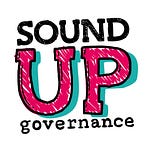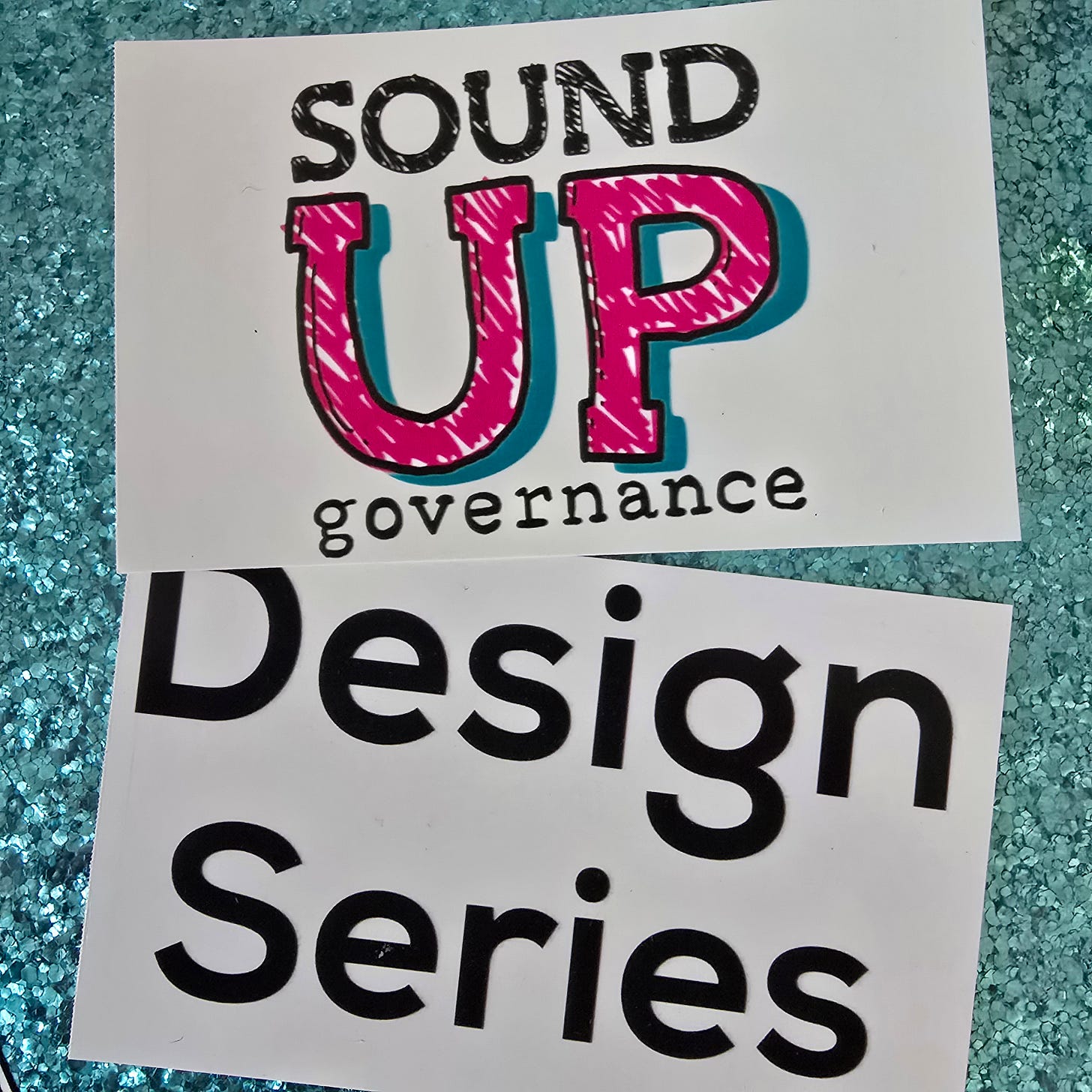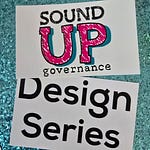TRANSCRIPT
Matt Voiceover
Welcome back to Sound-Up Governance. My name is Matt Fullbrook and this is the fourth and final episode in this short yet super cool series about the relationship between corporate governance and human-centered design. Once again, the voices you'll hear belong to me. Michael Hartmann, who's the principal of the directors college at McMaster University, Karel Vredenburg, who was global VP of UX research at IBM, and Tara Safaie, who's the executive Director of Health and Organizational Innovation at the design firm IDEO. In this episode, we take some steps to answer the question, "how the heck am I supposed to get anyone in my boardroom to buy into this design thinking stuff?" In the process, we emphasize the importance of the individual - you maybe - in good governance, but we'll get there eventually. Let's start off with a question from Michael.
Michael Hartmann
One challenge I do find is thinking through. We need to renew our board in terms of bringing in some new energy, particularly in the digital space. So I've seen lots of CIOs, CTOs coming in only to find themselves very isolated. And it's the old adage that you need at least a coalition of three or more. So when you think about changing the profile and getting new energy on the board, you also have to think about how do they feel supported as well. Otherwise you're going to have an isolated voice for change. So just one little thing to put out.
Tara Safaie
And in that position, Michael, I think it's particularly worth noting we see this often with social movements.
Matt Voiceover
That's Tara.
Tara Safaie
And we sometimes talk about cultural change in organizations as they tend to mirror social movements. You do need that first instigator and then the most vulnerable position and the most precarious one is the first, that first follower. So that person that see, you know, we often use that video in Woodstock where there's one person dancing all alone on the field and this one person comes and joins and they're confirming that this person isn't a total weirdo. But it could also go south, right? The whole thing could flop. And then there's just two of them and now they've taken a risk and that risk has failed. But it is once you have that second follower and you support and encourage the vulnerability that that follower should followership takes. It is then that it gives kind of permission and encourages someone to be that third person, which then kind of gets you the critical mass that can kind of turn the tide and cause an upswell. And in the Woodstock image, you see the third person come, come over and the fourth, fifth, sixth and Then, you know, next dozen come so quickly. It's really clear that that's the point that it tips. But that vulnerability that, that first followership takes, it's. It's a really high level of vulnerability. And it's really important to ask if your organization, broadly, but also your board is setting the conditions for that vulnerability to not be punished.
Matt
I want to reinforce this by saying there's something really powerful in what you're talking about that I think is extremely... I was about to say rare. That's even not... That's not even a big enough word. I think one of the secrets in what you're saying when we look at it in terms of governance or decision making or especially if we're in a boardroom, is good governance can be the job of a person in a moment. Not the job of a system or some shared process or some shared ideas, but a person saying, I'm pretty sure we need A or B or C to happen, and I'm going to be intentional about a thing here and see what happens. And even if it fails, that's still an example, in my opinion, of good governance. So I think what you're saying is a really useful reframing of this as, yeah, sure, it's an us thing, but in any given moment it can be a me thing.
Karel Vredenberg
Yeah, I like that. I would, I would add one other thought.
Matt Voiceover
That is Karel
Karel Vredenberg
How you can even do this organizationally within a board. To Michael, to your point, in terms of now you've got, you know, these experts, but they're now isolated. I mean, the other way to really bolster this is your committee work and what committees? Standing committees, yeah, they're all required. But ad hoc committees, where you say, you know what, we're just going to put this task force together, basically, that one person can amplify their particular perspective by bringing in all kinds of experts. They just go do something for a month, present back with t o the whole board, sort of the next meeting, and you can now have this ground swell of that second person at Woodstock dancing, you know what I mean? So I think you can strengthen your particular perspective by actually using ad hoc committees.
Michael Hartmann
I know we've come to the final minute, so I'm just going to see Matt, to you and Karel and Tara, any concluding comments to the group.
Matt F
And I will go first because I'm the least important and I'll be very brief, which is, you know, I think that this is, this is a really useful illustration, having the deep expertise in design in this conversation to say well, it's clear to me now that these are basically the same things, right? Governance and design are the same in some ways, and we just sort of... It's the application that I think is a bit mysterious. And I'm really grateful that we got the chance to talk through it and get some really useful ideas. So thank you, Michael, for having me, and Karel and Tara. This has been hugely insightful for me, so thank you.
Karel Vredenberg
I love your summary, actually. Yeah, yeah, I love your summary. I would characterize it as product development without design is a disaster. And if you want to really optimize and be really successful, you need to actually use design for product development. I think the same thing with boards, and I really think that it's going to be even more important as we go into the next phases of what's happening in the world. Quite frankly, I think that boards are going to become even more important, and everything we're talking about is going to be more important, too. Over to you, Tara, for your final words.
Tara Safaie
I really enjoyed this discussion, and I might leave you all with one piece of, I hope, inspiring wisdom, which is that design loves constraints. So all of the challenges that we've talked about today and all of the considerations, all the groups, all the muscle memory, all those things are constraints. And design thrives within constraints. Without them, it would be too overwhelming. And so I encourage you all to adopt a bit of a designer's mindset, to look at some of these very real challenges with the optimism that design offers, and see those constraints as the edges of the sandbox, but with plenty of space in which to play. And that's, I think, what these methods, I hope, inspire you all to do a little bit more. Thank you all for the great discussion. It's been lovely.
Matt Voiceover
Honestly, listening back through this discussion, I think the most important takeaway for me is that I'm not alone. Yeah, yeah, I'm being dramatic. Still, I sometimes feel like I'm the corporate governance version of Tara's first guy, dancing like a weirdo at Woodstock while most of the rest of the space is watching to see if I'm trustworthy and insightful or if I'm just some obnoxious dork making a fool of himself. Thankfully, I'm pretty shameless and I believe in what I'm doing, and I kind of feel like I've found some important allies in the design thinkers out there. The trick is reconditioning boards, and more importantly, individual directors and CEOs and other executives to understand that they have more tools than they think. Think back to the ideas that have come up in this little series, from low risk prototyping to obsessing over the customer, to having the guts to be the second person who gets up to dance with the trustworthy weirdo. Without all that, progress toward truly good governance will be elusive and slow. Thank you to Tara Safaie, Karel Vredenburg, and especially my friend Michael Hartmann for making all this happen. And thank you for listening. I'll be back eventually with some more episodes on some other fun governance topic. In the meantime, if you're interested to know more about today's music, check out the music notes at the end of the episode post at groundupgovernance.com See you next time.
MUSIC NOTES:
Most of the time, whether it’s some simple background music like this or a more complete and thoughtful composition, it starts with just some small thing. In this case, I dialed in the vaguely annoying plinky sound on the Teenage Engineering OP-1 Field and just randomly hit a chord voicing that made me go “oh, I guess that’s kinda nice.” Except for the guitar (my Gretsch Sparkle Jet through a whole bunch of effects) all the other sounds are on the OP-1. Funny thing about the chord voicings that I plinked out is that they’re all pretty ambiguous without any other instrumentation for context. At first I thought about making this whole thing a lot more tense and weird, but decided it was good enough when I kept it simple. Still…I have to admit that the plinky sound gets on my nerves after a while 😑. As always this was recorded and mixed on the fly on the TX-6 and TP-7.













Share this post